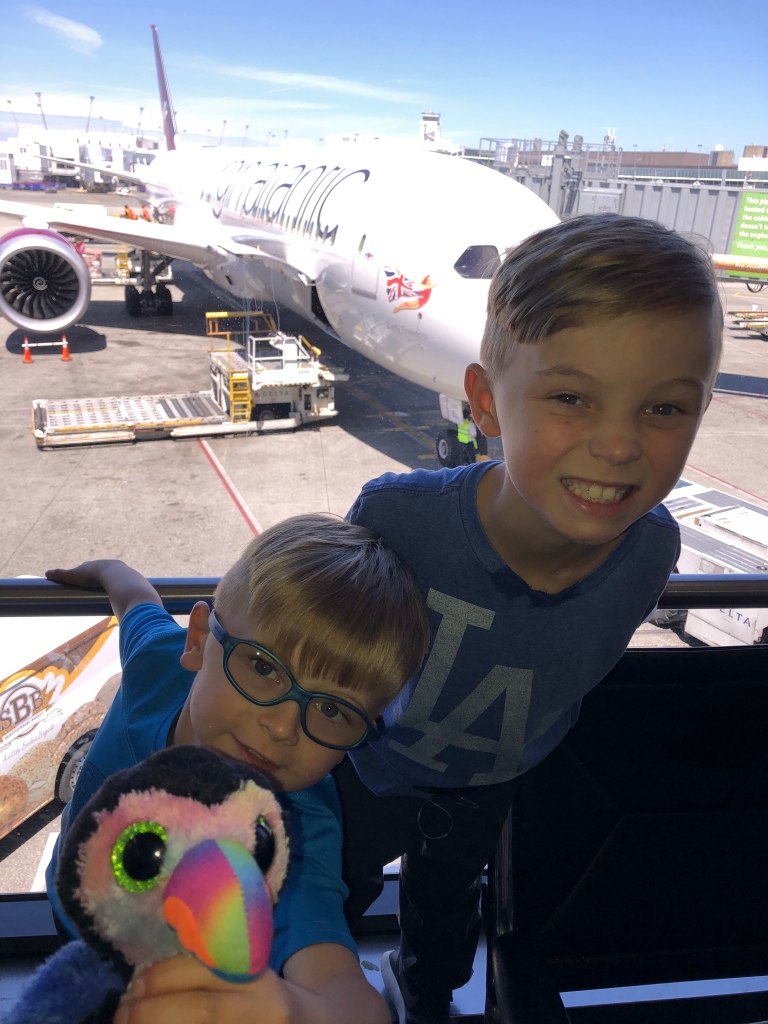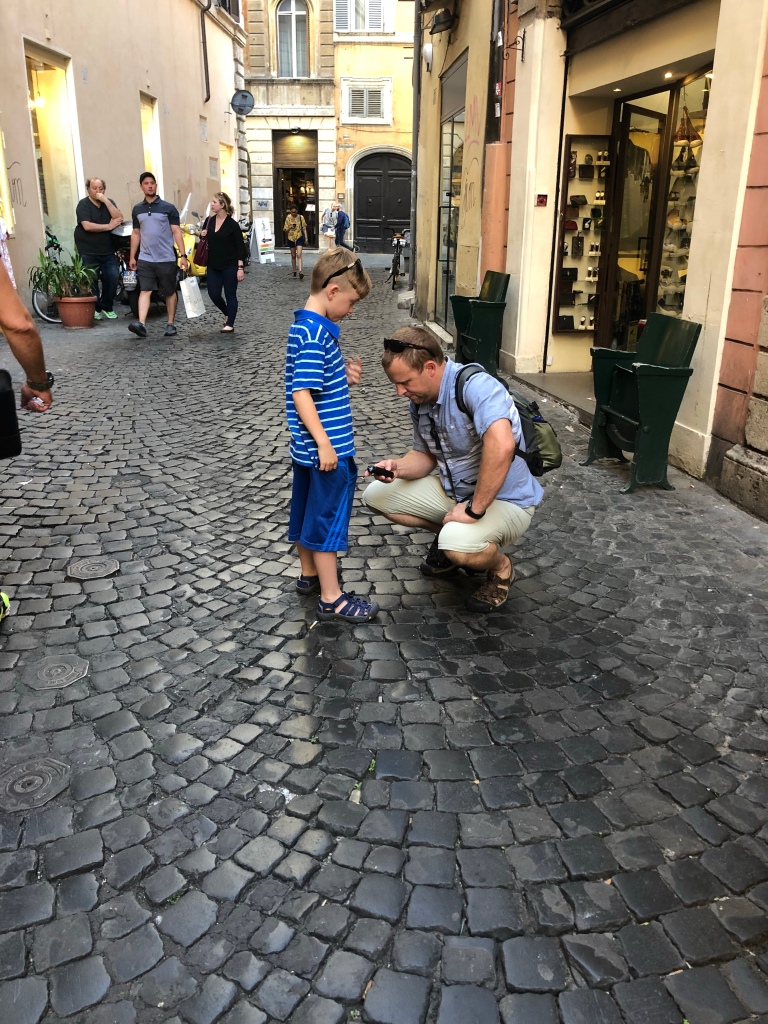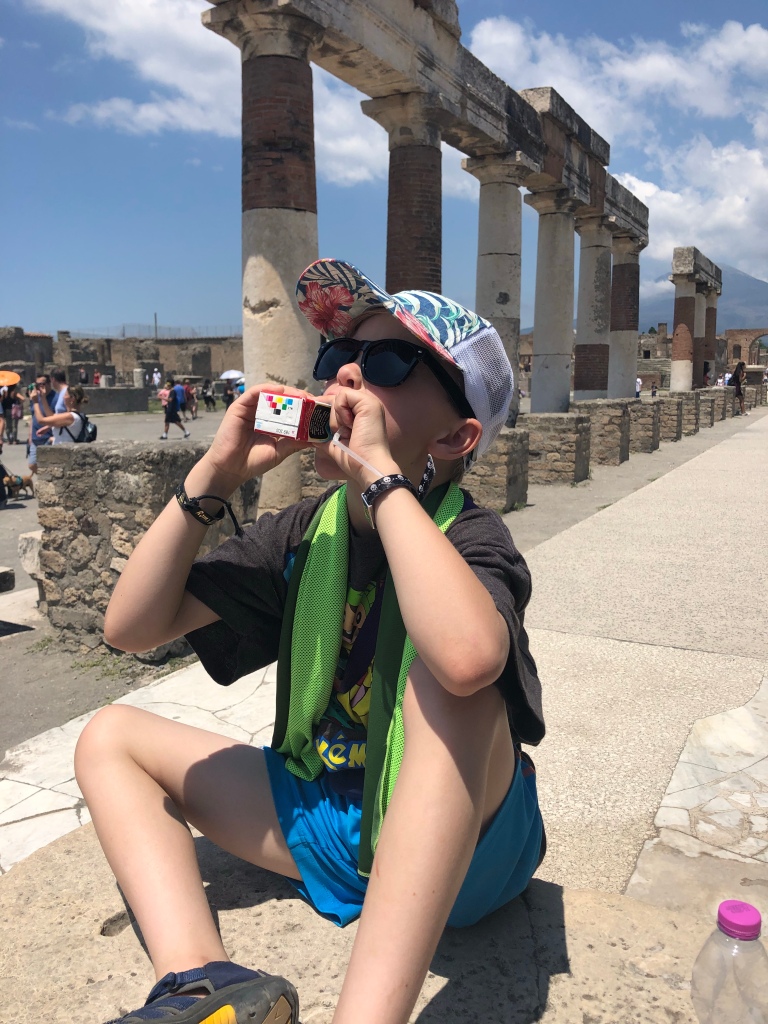By: Caroline Rausch

We love to travel. We have friends all around the world and I am always dreaming about our next big trip. Traveling with Type 1 Diabetes requires planning so that you do not end up needing an important medication/device at your destination. Being the determined (husband may say stubborn) person that I am, I set out to figure out how to safely transport everything that we would need for whatever trip we were taking. So, I plan, plan, plan. And then hope that everything goes the way I, well, planned!
Airline Travel Do’s:
- Carry on ALL supplies. You do not want the one bag that goes missing to be the one with your life-saving medical supplies in it. You can’t just walk into a store and replace these items.
- Put all supplies into one brightly colored bag. Keep only medical supplies in this bag just in case someone questions your need for an extra carry-on. I used to spread supplies out over several bags (I still stash a few supplies in each carry-on just in case), however, having them all in one bag will make it clear to the airline that you are not taking advantage of their policy.
- Label your medical bag as a medical bag and include your contact information just in case it gets lost or stolen.
- If someone at the gate or ticket desk tries to make you check it, stand your ground and do not give in. You (hopefully) don’t need to be rude, but an extra medical bag is allowed by law (at least in the U.S.).
- Bring double of everything you might need. If you plan on swimming, bring 3x’s as much. (See packing list below).
- Have enough low supplies with you for the entire flight and then some. It’s Murphy’s Law that the one time you don’t is the one time you sit in a hot plane on the runway for 4 hours. . . before your 10 hour flight or it’s the time there is so much turbulence that the flight attendants can’t serve juice the entire flight.
- Get a FRIO to keep your insulin cool when you travel between fridges. I like the large one for traveling and the extra small one when we are in hot climates and want to keep our open bottle on us. https://www.amazon.com/Insulin-Cooling-Reusable-Evaporative-Medication/dp/B0002262DA/ref=sxts_sxwds-bia-wc2_0?cv_ct_cx=frio&keywords=frio&pd_rd_i=B0002262DA&pd_rd_r=916491ea-fcd6-4b4b-83c8-1342cc9d2b73&pd_rd_w=Obc9L&pd_rd_wg=X1EbF&pf_rd_p=c8430d96-912c-40d1-9740-e1beca245dd5&pf_rd_r=NR5XF439DC7WN63JQN07&psc=1&qid=1582584291
- Keep the frio in a bag that allows air flow. We love this bag as it has a mesh area on one side where we keep the mini frio and test kit and the other side holds low supplies. Perfect bag for on the go (and it fits in my purse as well). https://groupmedicalsupply.com/product/chillmed-carry-all-diabetic-travel-case-supply-bag-red/
- Bring a refrigerator thermometer to make sure your insulin isn’t frozen or too hot.
- If using a tubed pump, unplug your pump when you take off and land. Something about the air pressure on the tube forces insulin out upon ascending and sucks it back up into the tube when descending. Once we reach cruising altitude, we prime the pump and reattach. When descending we detach again then prime and reattach upon landing… Here is a fantastic article on the science behind this: https://asweetlife.org/what-you-should-know-about-flying-with-an-insulin-pump/?fbclid=IwAR23hN3ScBG2wKueVPPk0-BXdAOMZB2PyicqvOTIIpsZ29jCzG0dGcH-008
- Bring a doctor’s letter stating what kinds of supplies you will bring on the flight. Make sure it includes juice if juice is something you regularly use to treat lows. We never had or needed a letter until the trip through Heathrow Airport in London. I am so glad that I asked for this travel letter at the last minute. Heathrow security is understandably much more strict with liquid allowances and ONLY because the letter called out juice, were we able to carry this on without any problems. We can use other supplies, however, juice is the quickest and easiest for my son (especially in his sleep).
- Get a loaner backup pump from your pump supply company if traveling out of the country (including Mexico and Canada) or to Hawaii. If your pump fails, they won’t ship you a replacement pump overseas (believe me, we’ve tried). Medtronic has a loaner pump program that has worked great for our 670g on two trips.
- Keep liquids easily accessible: when connecting in other countries, they may have more stringent regulations about the bag your liquids must fit in. I thought it was kind that the British security personnel at Heathrow were offering quart sized bags for everyone when we got to security. I didn’t comprehend that they actually wanted us to put all liquids into that exact small bag. Once we reached the scanners, we learned that whatever didn’t fit into the bag would have to be thrown away. In the US, I have always made sure that all my containers were less than 3oz and I usually pack each container in its own ziplock just in case it explodes on the flight. These individual ziplocks took up a lot of extra space in that small quart sized bag. Needless to say, we held up security while we removed all the extra layers of ziplocks before placing them (all) in the quart sized bag. Lesson learned, for sure!
Diabetic Supplies Flying Checklist:
- Insulin (plus back up of short AND long lasting, even if you’re on a pump)
- Frio to keep your insulin cool while traveling.
- Infusion sets (for pump) – double the amount you would normally use and triple it if your vacation includes swimming or waterslides.
- Sensors (triple this amount)
- Inserter for sensor
- Charger for sensor
- Extra batteries
- Tape for sites/sensors
- Back up poker
- Back up meter
- Extra lancets
- 3x’s Test strips
- Ketone strips
- Ketone meter
- Alcohol wipes
- Blunt nail scissors for cutting tape
- Syringes (for back up if on a pump or triple normal amount if MDI)
- Back up pump if your pump company has a loaner pump program
- Low supplies for the flight and at least a few days
- Vet Wrap for keeping sensors on arm while swimming
- Tags labeling your bag as full of emergency diabetic supplies
- Refrigerator thermometer to make sure the small fridge doesn’t freeze your insulin
- Back up glucagon
- Small food scale to help you estimate carbs
What NOT to Do:
- Do not try to send prescription medical supplies internationally, even if you are planning a long trip. Take it from me. . . you will pay a ton to ship it and then customs will want a letter of medical necessity from a doctor in that country (well, at least Italy would) plus 25% duty for the VALUE OF THE SUPPLIES, and then it will be returned to you at home…. so just don’t. Just suck it up and carry.it.all.on!
- If you use the Medtronic 670g, don’t push buttons on the screen when ascending/descending or change the pump mid-flight. It messes with the vacuum seal and will cause the center button to crack (at least as of 2020, hopefully Medtronic will change this soon).
- Don’t forget your frio from the counter or insulin in the fridge. I usually leave a sticky note on the door to remind myself before we dash out for our flight, train, etc.
- If wearing a pump or CGM, do NOT go through the full body scanners. We have traveled with Omnipod, Dexcom, and Medtronic and they all state not to put their electronics through the body scanner. Go through the X-ray machine instead. This may require a pat/wipe down so plan extra time for this joy. . . Also, ask for a hand check of any fragile electronic items that the xray may damage (pods, pumps, cgms….). Better to be safe (and slooooow at security) than have a malfunction on the other side!
Since diagnosis, we have traveled to Disneyland & Universal Studios, Mexico, Arizona, Hawaii, Italy, London, & Costa Rica. We have taken many other road/camping trips around the Western U.S. We love the family time we get on these vacations. Between sports, school, and work, it is a challenge to get quality time together. The trips allow us to recharge our family and batteries. These learning experiences and checklists grow with each trip and help each subsequent trip become smoother and smoother – so that the focus of each trip is family… with a little diabetes on the side!



